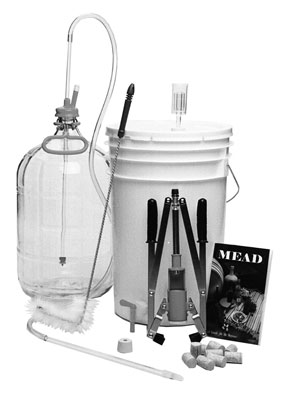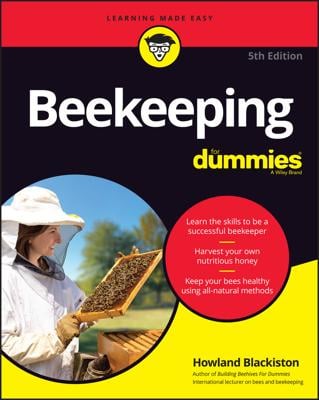Mead is a wine made from honey instead of grapes. It was the liquor of the Greek gods and is thought by scholars to be the oldest form of alcoholic beverage. In early England and until about 1600, mead was regarded as the national drink. In fact, the wine that Robin Hood took from Prince John had honey as its base.
When mead is made right, the resulting product is simply delicious! And like a fine, red wine, it gets better and better with age. Many companies supply basic wine- and mead-making equipment to hobbyists. All you need is a little space to set up shop, and some honey to ferment. The key to success is keeping everything sanitary.

The following recipe produces an extraordinary mead. Technically, this is a Metheglin, the term given to mead that is spiced. The recipe yields about 40 bottles of finished product. Adjust the amounts to suit your needs.
Ideally, keep the room’s temperature at between 65 and 68 degrees F (the cool basement is a good place to brew mead). If the temperature is higher than 75 degrees F, the yeast may die; if it’s less than 50 degrees F, fermentation ceases. Note that a portable space heater with a thermostat helps control basement temperatures during winter.
The initial honey and water mixture is called the “must”. The recipe calls for the following:
32 pounds of dark wildflower honey
5 gallons of well water (nonchlorinated water)
5 sticks of cinnamon
1 tablespoon cloves
Add the following to the “must”: 4-1/4 tablespoons of wine yeast nutrient (available at wine-making supply stores).
Pour the mixture into a large (16.5-gallon) initial fermentation tank.
Top off with water so that the tank contains a total of 13 gallons of must. Stir vigorously to blend and to introduce oxygen (splashing permitted).
Add the following ingredients to the tank of must:
13 potassium metabisulfite tablets (available at wine-making supply stores) to hinder the growth of undesirable bacteria.
A few drops of antifoam agent (available at wine-making supply stores)
Wait 24 hours, and then add the following to the must in the fermentation tank: 2-1/2 packets of white wine yeast (stir to blend).
Cover loosely and let the must ferment for 3 to 4 weeks before performing the first racking (when the bubbling and fizzing has stopped, it’s time to rack.
Racking is the process of siphoning off the liquid and leaving the dead yeast cells behind.
After the initial 3 to 4 weeks, rack liquid into glass carboys. You’ll need two or three 5-gallon carboys for this recipe.
Fill right up to the neck of the carboy (you want to minimize air space). Place a fermentation valve on each carboy. The valve keeps air and bacteria from entering the carboy. Add one potassium metabisulfite tablet for each gallon of liquid to maintain 50 parts per million (ppm).
Rack a total of two or three more times at 1- to 2-month intervals.
Each racking further clears the mead. After the final racking, transfer the mead to sterilized wine bottles and cork tightly. Store bottles on their sides in a cool dark place. Remember, the longer the mead is aged, the more improved the flavor. Salute!
You can get your wine sparkling clear by using a special filtering device available from beer- and wine-making suppliers.

